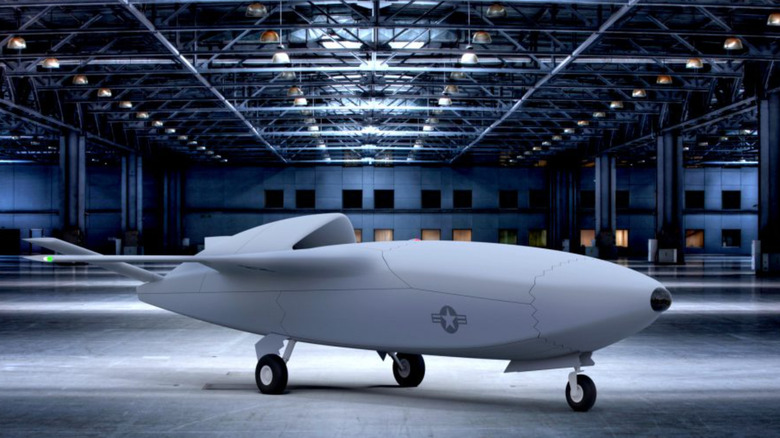Skyborg: The Drone That Could Revolutionize Air Force Operations
When someone tells you that we're living in the information age, they're not just talking about social media and the internet. In an active combat situation, accurate, up-to-date information is of the utmost importance, ensuring that military pilots can not only accomplish their objectives but keep themselves safe. Modern military aircraft have many means of gathering information on the battlefield, but that doesn't mean there can't be a little more.
The U.S. Air Force Research Laboratory has been concocting new ways to assist in the information-gathering process during flight, and its latest advancement could bring a new meaning to the phrase "eye in the sky." The AFRL has developed Skyborg, an autonomous military aircraft that, rather than supplant human pilots, is designed to fly alongside them and scope out situations. With the help of Skyborg, pilots could get an even better view of the skies that they may not be able to see from their cockpits or glean from their onboard instruments.
The watchful eye of Skyborg
Skyborg's primary job is to fly in formation with companion human-manned vehicles and provide round-the-clock scans of an ongoing combat engagement. Using cameras and sensors bolstered by onboard AI algorithms, Skyborg provides a constant feed of information to give a greater picture of an aerial battlefield as it unfolds. It's not just random minutiae, though- Skyborg's AI, programmed with parameters set by its operators, takes note of points of interest in its vicinity, whether they be approaching enemy vehicles, unknown vehicles, obstacles, or allies in distress. With the help of Skyborg's vigilant eye, pilots will have a theoretical view of not just everything around their planes, but major points of interest to avoid or act upon.
Not only does this technology provide an invaluable advantage on its own, but it's also setting an impressive precedent for the advancement of Air Force tech. With the oversight of the "Skyborg Vanguard," a team of AFRL and Air Force Life Cycle Management Center personnel, new military technology manufacturers and developers are being brought into the fold and building up the Skyborg framework. With the hard part of developing the platform already done, these developers will be able to create newer and better unmanned vessels faster and cheaper, lowering the barrier of entry to the industry and ensuring a steady procession of research and development.

